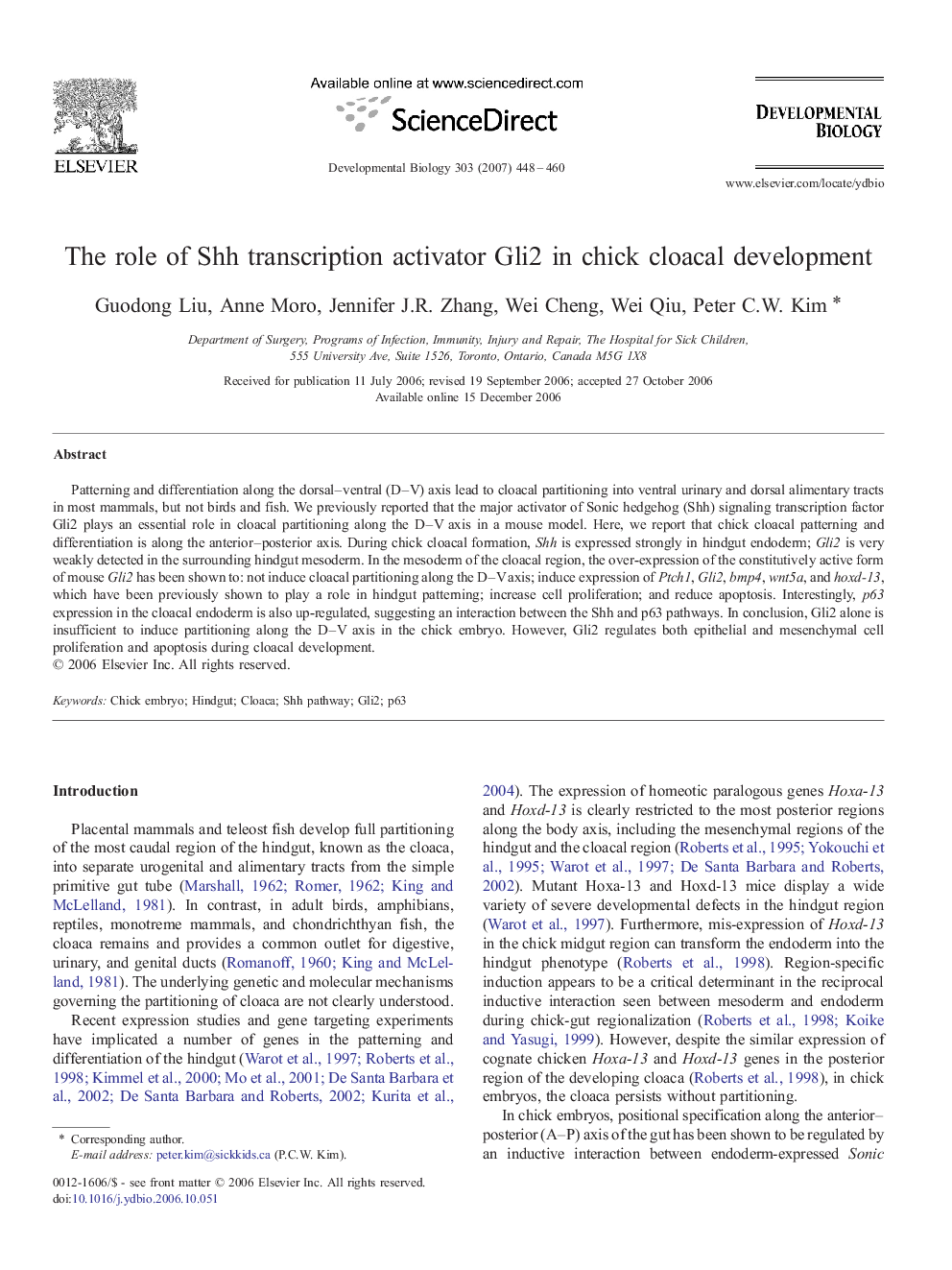| Article ID | Journal | Published Year | Pages | File Type |
|---|---|---|---|---|
| 2175466 | Developmental Biology | 2007 | 13 Pages |
Abstract
Patterning and differentiation along the dorsal-ventral (D-V) axis lead to cloacal partitioning into ventral urinary and dorsal alimentary tracts in most mammals, but not birds and fish. We previously reported that the major activator of Sonic hedgehog (Shh) signaling transcription factor Gli2 plays an essential role in cloacal partitioning along the D-V axis in a mouse model. Here, we report that chick cloacal patterning and differentiation is along the anterior-posterior axis. During chick cloacal formation, Shh is expressed strongly in hindgut endoderm; Gli2 is very weakly detected in the surrounding hindgut mesoderm. In the mesoderm of the cloacal region, the over-expression of the constitutively active form of mouse Gli2 has been shown to: not induce cloacal partitioning along the D-V axis; induce expression of Ptch1, Gli2, bmp4, wnt5a, and hoxd-13, which have been previously shown to play a role in hindgut patterning; increase cell proliferation; and reduce apoptosis. Interestingly, p63 expression in the cloacal endoderm is also up-regulated, suggesting an interaction between the Shh and p63 pathways. In conclusion, Gli2 alone is insufficient to induce partitioning along the D-V axis in the chick embryo. However, Gli2 regulates both epithelial and mesenchymal cell proliferation and apoptosis during cloacal development.
Keywords
Related Topics
Life Sciences
Biochemistry, Genetics and Molecular Biology
Cell Biology
Authors
Guodong Liu, Anne Moro, Jennifer J.R. Zhang, Wei Cheng, Wei Qiu, Peter C.W. Kim,
